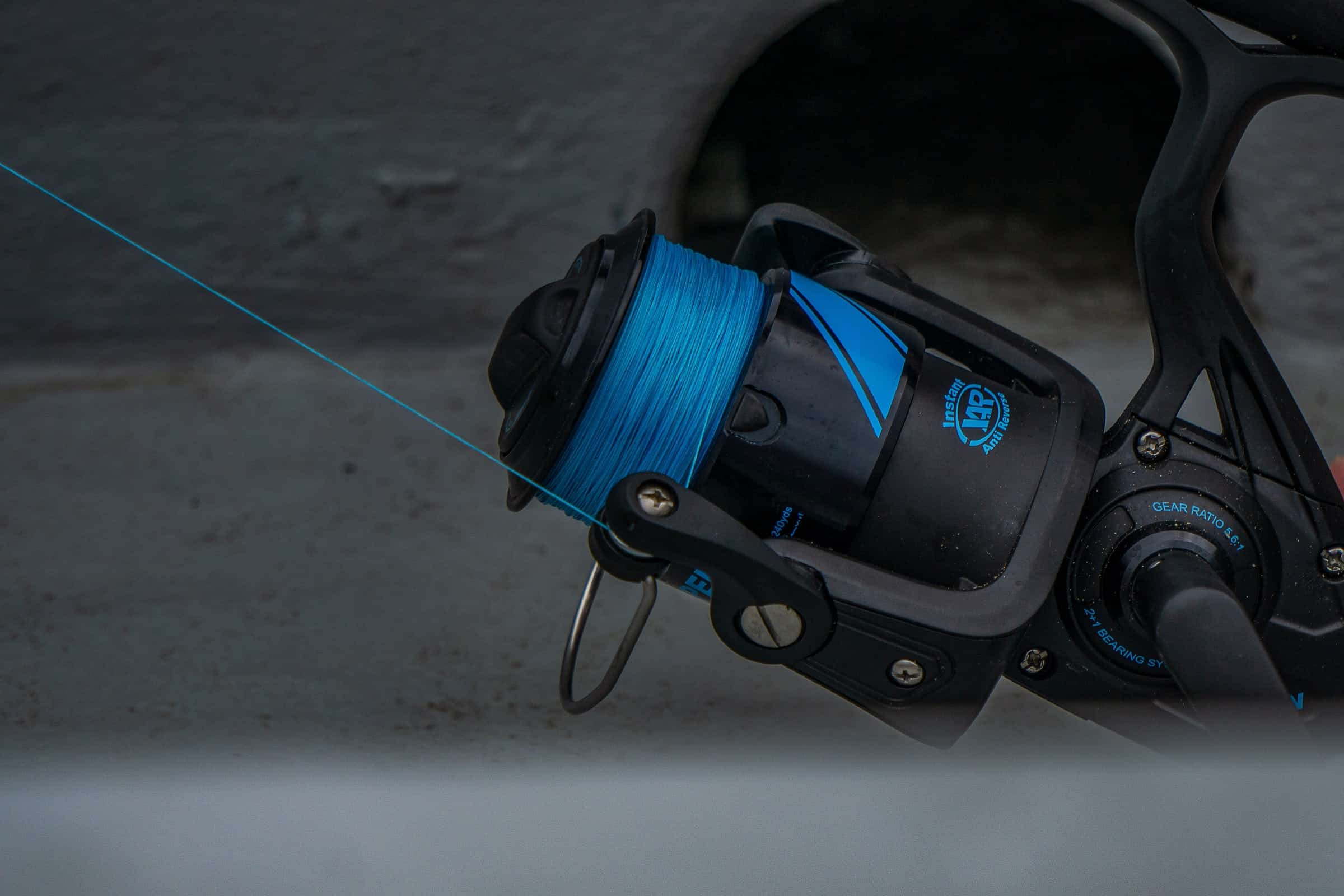The wide variety of reels now available to anglers would leave any fisherman from the 19th century absolutely flabbergasted.
While the classic spinning reel has still maintained dominance in the industry, countless other challengers have made their way onto the scene, offering bold new features and functionalities. Long gone are the days when the spinning reel played the judge, the jury, and the executioner. With so many new and impressive designs, it’s no wonder that most modern anglers have a rod locker filled with half a dozen setups.
Still can’t figure out what sort of reel to buy? Read on and learn about the crucial differences and main purposes of the major types of fishing reels.
GUIDE TO THE DIFFERENT TYPES OF FISHING REELS
GUIDE TO THE DIFFERENT TYPES OF FISHING REELS
SPINNING REELS
BEST SUITED FOR
Freshwater trophy fishing, inshore fishing, and deep-sea fishing
DIFFICULTY TO USE
Easy
CASTING DISTANCE
Up to 60 yards
REQUIRED ROD TYPE
Spinning Rod
The classic spinning reel is a remarkable tool that has remained popular since its widespread distribution in the early 30s.
Spinning reels are the most basic variant of all the types of fishing reels due to their simple design crafted of nothing more than a bail and spool. The setup is quite straightforward, the spool sits atop the handle with a small wire bail to prevent the line from freely releasing itself. To cast, anglers only need to flip the bail, pinch the line against the rod, and toss out their bait. This quick process also allows for pinpoint accuracy as the overhand or sidearm tossing motion can determine within a few feet of where a lure will land.
However, spinning reels have countless subcategories such as surf reels, offshore reels, and freshwater reels.
Surf reels are the largest variants of the aforementioned models, as they must be sizable enough to hold copious amounts of line. Moreover, due to their frequent use in saltwater climates, it is imperative that such reels resist corrosion and weathering.
Offshore reels are nearly identical to surf reels and can be used interchangeably. Both models can spool an impressive amount of line and offer impressively strong drag systems for larger fish. Offshore reels are most often used by anglers exploring shorelines rather than extreme depths. For super deep-water fishing, baitcasters are the better option as they hold more line.
Finally, there are the standard freshwater reels. The classic open face fishing reel for freshwater is ideal for a wide variety of species, ranging from those as small as panfish to those as large as river catfish. Freshwater reels don’t often contain the same coatings as offshore or surf reels, as they aren’t designed to be used in saltwater. For this reason, it is best to only designate freshwater reels to your local lakes and rivers.
BAITCASTING REELS
BEST SUITED FOR
Topwater trophy fishing, crankbait fishing, and deep-sea fishing
DIFFICULTY TO USE
Difficult
CASTING DISTANCE
Up to 90 yards
REQUIRED ROD TYPE
Baitcasting rod
Baitcasting reels are likely the second most popular amongst the different kinds of fishing reels, due to their unique attributes and viability in countless situations.
A typical baitcasting reel is comprised of a frictionless bar that sits atop a baitcasting rod, allowing line to quickly release itself from a spinning spool. A small button or lever is then attached to the side of the piece to lock the spool into place when retrieving.
Experienced anglers gravitate towards baitcasters for numerous reasons, but most prominent amongst those is likely the baitcaster’s utter reliability with big fish. Due to a unique design that sits atop the rods, the weight of the line is directly transferred into the blank of the rod rather than just having it against the eyes (like a traditional spinning setup). Additionally, baitcasters can tolerate a greater amount of drag and have a higher gear ratio.
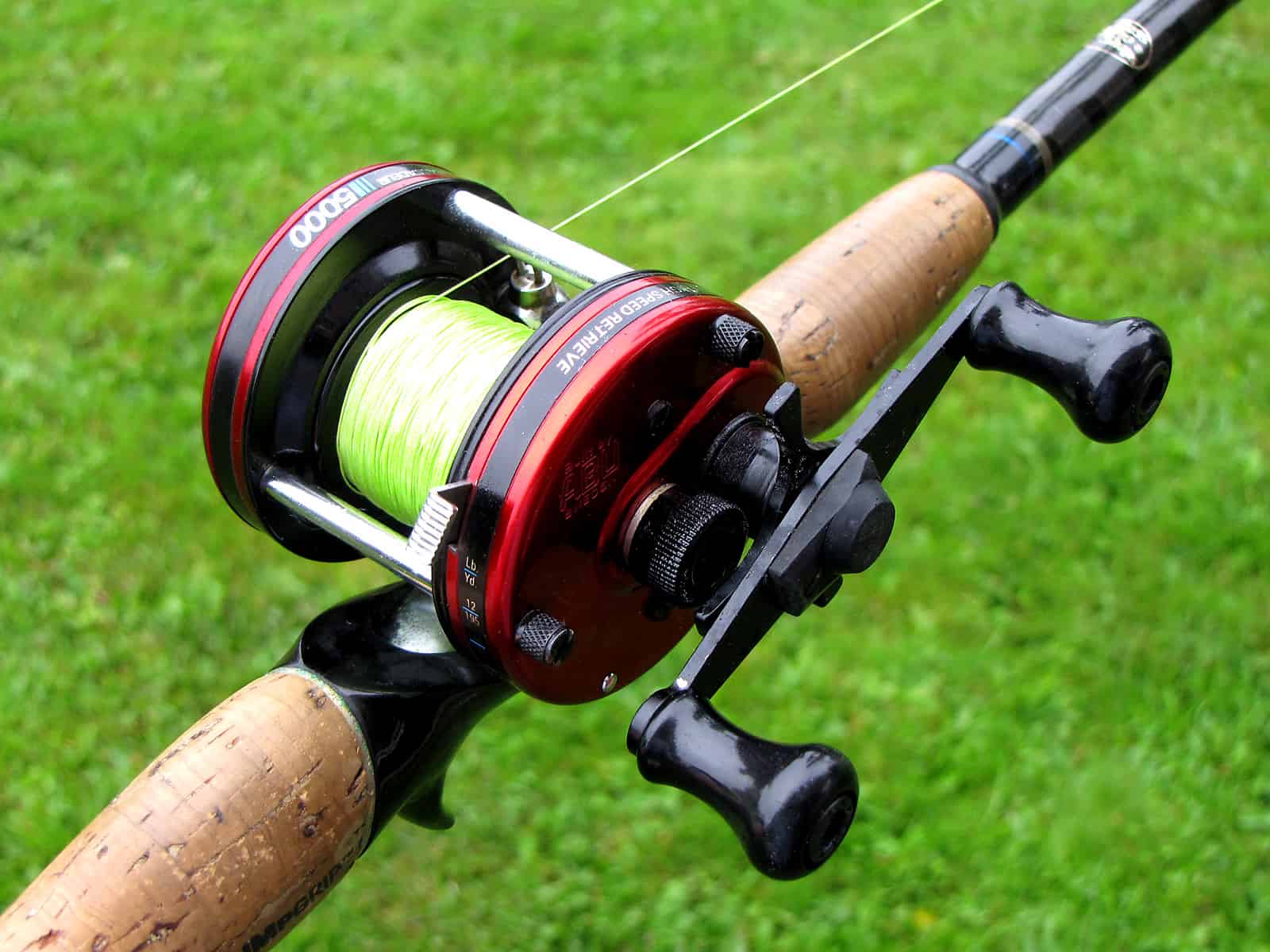
Drag is nothing more than a brake clutch that disengages or engages depending on the amount of weight applied. So, as basitcasters typically have a higher drag setting, it only makes sense that they are more useful for big fish.
Finally, there is the gear ratio. The gear ratio of a reel indicates how many times the spool will spin around with one full rotation of the handle. For baitcasters, this ratio is much greater than spinning or spincast reels, giving anglers the chance to reel their bait in quickly.
All in all, the best baitcasters are a great option for freshwater trophy fishing, as they quickly move topwater bait across the water, or crankbaits through the depths. The variant isn’t extremely useful for inshore fishing but becomes incredibly viable once again when doing deep sea fishing, as large amounts of line are needed.
SPINCAST REELS
BEST SUITED FOR
Panfish angling, lakeside angling, and novice angling
DIFFICULTY TO USE
Easy
CASTING DISTANCE
Up to 30 yards
REQUIRED ROD TYPE
Baitcasting rod
Spincast reels are often seen in the hands of young children, as they are an incredibly simple variant with essentially no learning curves.
An ordinary spincasting reel consists of an enclosed stationary spool that holds a roll of line. The stationary spool then gradually releases the line once a button is pressed, allowing it to freely unwind until the force of the lure hitting the water stops the release.
The true appeal behind spincast reels is their simplicity, as they really are much easier to learn to use than any other different fishing reels. For this reason, children and often newcomers reach for this variant rather than for baitcasting and spinning reels. The design is relatively tangle-free, lightweight, and easy to cast.
However, spincast reels are limited in their utility. Most models struggle to spool even half that of spinning rods and require only lightweight line. Thicker line such as that which is 8 lb. test and above fails to release itself from the inside of a spincast reel, and instead creates a bird’s nest on the reel’s interior.
Nevertheless, spincast reels are still a reliable option for adults looking to introduce their children to the sport. Even lightweight models can still land anything from panfish to bass – making them a great all-round option.
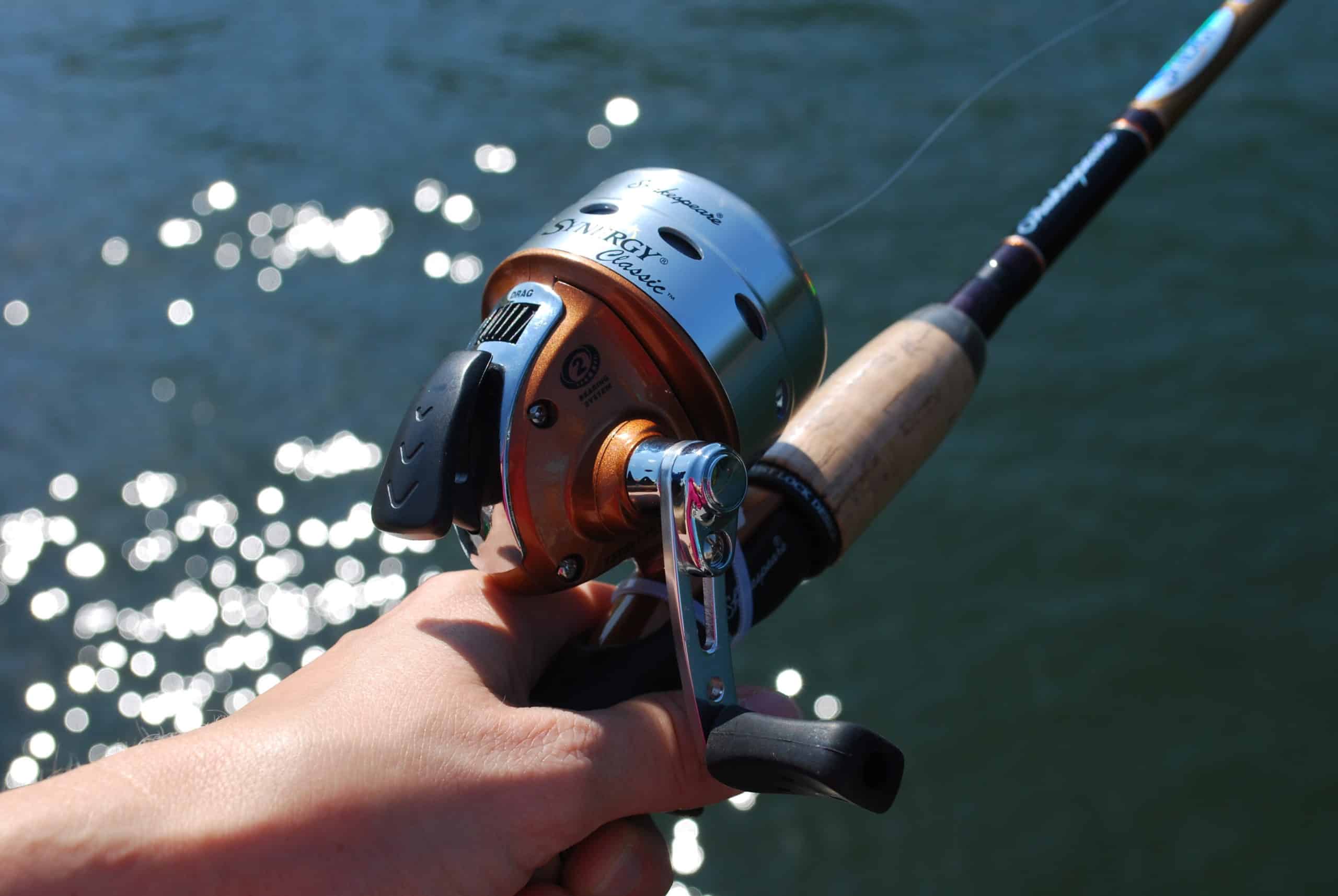
FLY REELS
BEST SUITED FOR
Stream fishing, creek fishing, and trout/salmon fishing
DIFFICULTY TO USE
Intermediate
CASTING DISTANCE
Up to 40 yards
REQUIRED ROD TYPE
Fly rod
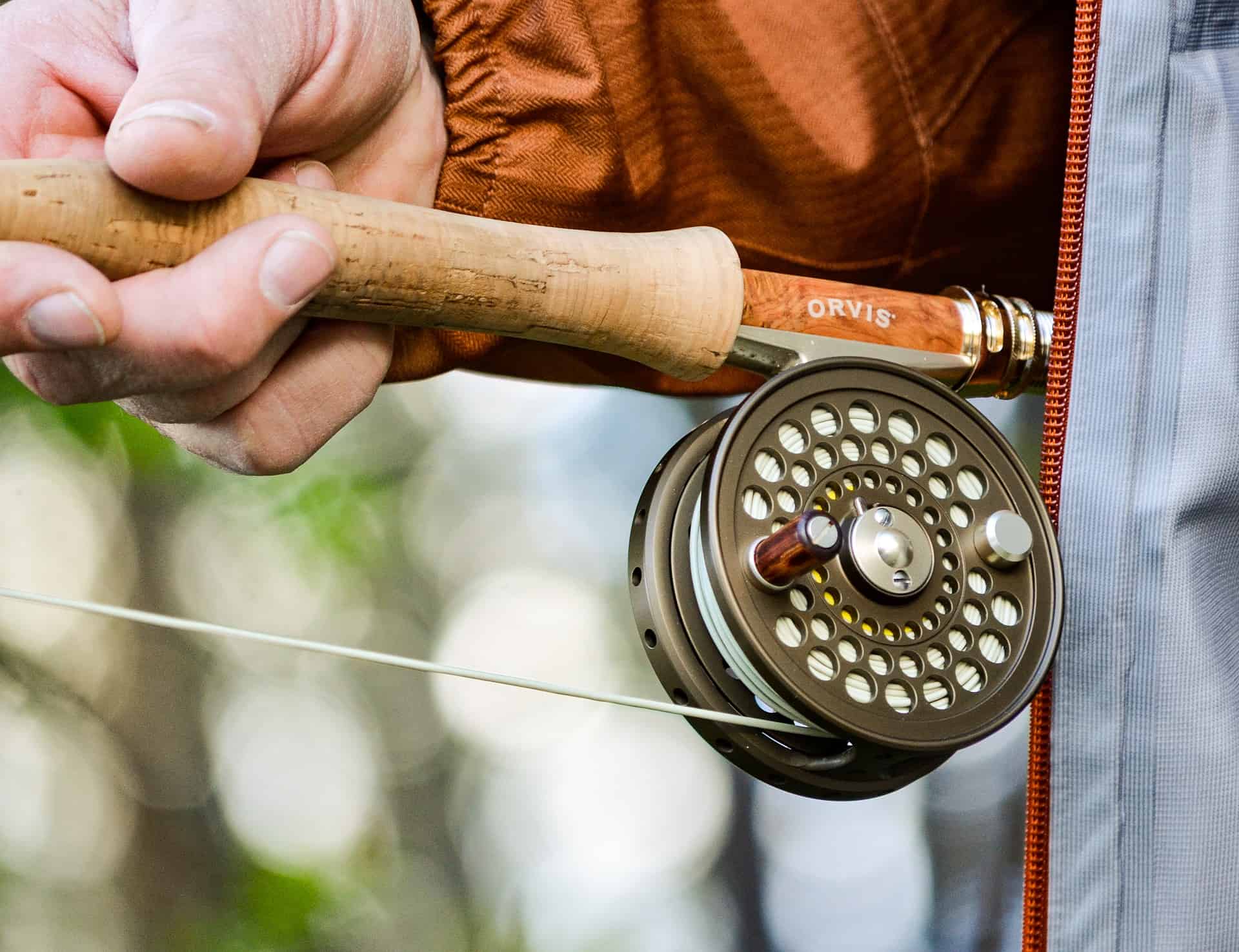
When it comes to trout fishing, there is no better option than fly reels.
Fly reels are specifically designed to whip small flies around on top of the water’s surface, simulating an insect landing on the surface tension. In order to accomplish such a task, fly reels gently release line after being whipped from the elbow of an angler.
Their general construction is modest – only featuring a metal circle with a center axel to spool line on. Two small knobs are then added to the side to function as the handles when reeling in a fish.
Fly reels are incredibly effective against trout due to their ability to replicate insects. With nothing more than a few light tosses, anglers can easily place a minuscule fly on the water in front of a trout, catching its attention instantly.
Sadly, fly reels don’t belong everywhere. They can really only be used in areas where the surface tension is calm enough to present ripples, which also limits the species of fish that an angler can catch. Usually only trout and a handful of other species take interest in small insects atop the water.
CENTERPIN REELS
BEST SUITED FOR
Stream fishing, river fishing, and salmon fishing
DIFFICULTY TO USE
Intermediate
CASTING DISTANCE
Up to 30 yards
REQUIRED ROD TYPE
Fly rod or centerpin rod
Centerpin reels have an incredibly loyal group of users, as they are strategically modified fly reels with greater capabilities.
Centerpin reels may look like fly reels to an untrained eye as they are created with the same thin round spool. However, the greatest difference between the two is that centerpin reels have a free spooling axel in the center of the mechanism and no drag components. These two radical differences allow the line to exit without trouble and freely drift down the stream, yet it also means that anglers need to create a drag system with their hand. This can be done by restraining the spool from completely unwinding.
The typical setup for a centerpin consists of an 11+ foot long rod and a drifting rig (the bait) that allows the fly or eggs to float on water. The excessive length of the rods ensures that the bait more effectively floats on the water rather than plunging below the surface. Unlike fly reels, centerpins can be cast with a flicking motion instead of an overhead whip.
Although they are somewhat different reels from the traditional fly and spinning models, those who start using centerpins on moving water rarely migrate back to the others. They offer such a natural drift for bait and move rigs in a way unlike any of the other types of fishing reels.
All in all, centerpin reels are a really solid option for anglers heading to rivers, streams, and tributaries with slow to fast moving water. They can be used to angle anything, from small trout to hefty salmon, all while providing a thrilling and vigorous fight.
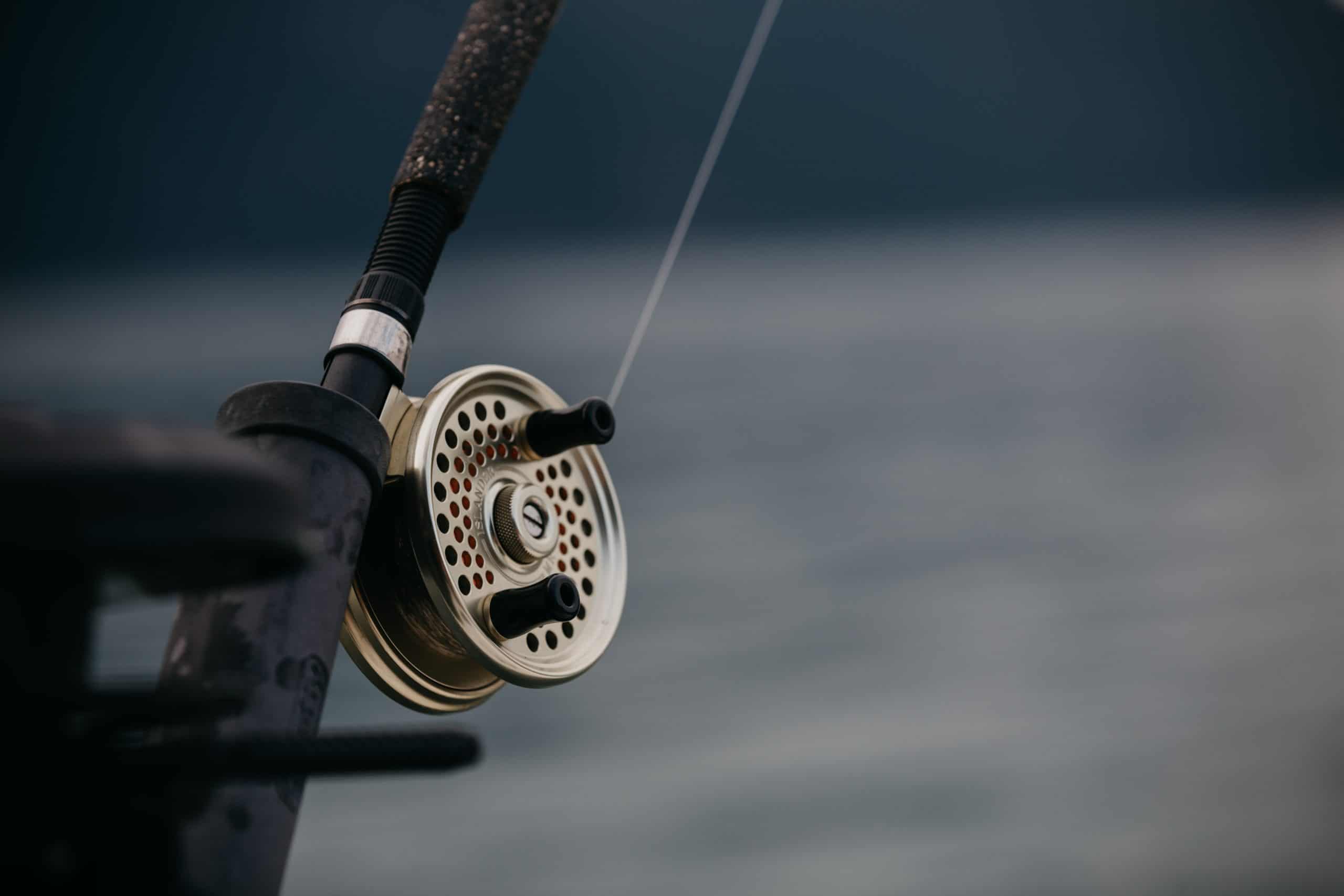
GUIDE TO THE DIFFERENT TYPES OF FISHING REELS
FAQs
What are the different types of fishing reels?
Although there are plenty of sub-categories, there are truly only five different types of fishing reels in the mainstream market. Those five distinct types are spinning, baitcasting, fly, centerpin, and spincasting reels. The differences are briefly explained below.
Quality spinning reels largely dominate the market due to their relative ease of use, precision casting, and excellent maneuverability. Anglers must only flip the metal bail to expose the line, allowing the bait to be tossed in just moments.
Next are baitcasting reels, which like spinning reels, can be spotted practically anywhere. Baitcasters are compact pieces centered around a frictionless wheel that spins to release line. Such models are extremely common for freshwater trophy fishing.
The hybrid of the two aforementioned models is spincast reels. Spincast reels are wildly simple to use, as the design allows line to be released with nothing more than a quick press of a button.
Unlike the prior fishing reels, fly reels are designed in a totally different manner, and for a very distinct purpose. Like the name suggests, fly reels are made for tossing small flies onto moving water to simulate insects and other small creatures.
Finally, there are centerpin reels, which serve the same purpose as fly reels. However, unlike fly reels, centerpins spin on a frictionless bar to constantly release line. While they can be used interchangeably, centerpin reels are far larger and more demanding than fly reels.
What reels are best suited to which types of fishing?
With so many types of fishing reels now available, it has become easy to designate certain models for different purposes. Some perform better in rivers and fast-moving water, whereas others perform better in stagnant and placid water.
For the most part, fishing reels can be divided into two major categories – those which aim to catch fish by flies and those which do not. These two categories can then be broken down further, with each specific reel being designated to specific categories.
The two kinds of fishing reels that are used for fly fishing are fly reels and centerpin reels. Fly reels work by whipping small, tied flies on top of slow-moving water, to simulate small insects landing on the surface. Centerpins on the other hand work by allowing the fly rig (bait) to drift down the stream. The methods can still be utilized in other situations, but for the most part centerpin and fly reels really belong on slow moving rivers where flies can gently drift.
The other major category of reels, which are those that do not use flies, is comprised of spinning, baitcasting, and spincast reels. Instead of whipping around small flies on the surface, each of the aforementioned models is designed to work lures above or below the surface.
Furthermore, each reel has its own specific purpose. Baitcasting reels are a great option for topwater and crankbait fishing as they have high gear ratios, allowing lures to quickly be retrieved. Additionally, the models pack a ton of drag strength, making them a solid choice for heavy trophy fish. However, they become somewhat phased out after trophy fishing until deep sea fishing, where they are once again useful due to their spool capacity and drag strength.
Unlike baitcasters, spinning reels are somewhat of a jack of all trades. There are countless options for freshwater fishing, river fishing, and even an impressive number for saltwater fishing. The freshwater variants are typically used for species such as bass, crappie, and catfish, whereas the saltwater models are typically used for deep sea species such as grouper, seabass, and other heavy species.
Finally, there are spincast reels, which are truly the most basic of them all. Spincast reels are best suited for children or novices to the sport, due to their inability to handle large amounts of weight. Spincast reels truly just belong at the local lakes, ponds, and rivers.
Which fishing reels are the easiest to use?
It seems that every small toddler starts off with a spincast reel, as the push-button mechanism could not be any easier for a novice angler.
Spincast reels require nothing more than the push of a button to release line, making them a great option for kids fishing and new sportsmen. The interior mechanism of the reel simply releases the spool, allowing it to flow at a controlled speed while being cast.
However, spincast reels aren’t too fashionable for adults, so the next easiest model would likely be the traditional spinning reel. With nothing more than a quick flip and pinch of the line, anglers can toss bait great distances with precision and accuracy. Most of the different fishing reels used by professional anglers tend to be spinning variants, as they perform so well.
That said, those who want simplicity should steer clear of baitcasting and fly reels as both require advanced techniques to cast.
What size reel should I get?
The sizing available on different types of reels can be compared to the various tools present in a workshop. Each piece has a specialized purpose and function, so like tools, owning the right size fishing reel can make a world of difference.
For the most part, spinning reels can be grouped into three main categories: small, medium, and large. These categories can easily be defined by a number system which each manufacturer applies to its products.
Small reels range in size from 1000 to 3500 making them an ideal choice for most freshwater species. They are lightweight, nimble, and easy to manage. Small reels are a solid pick when angling for bass, panfish, and trout.
Medium sized reels can be defined as anything rated from 4000 to 6000. These types of reels are ideal for inshore, river, and ocean fishing, as they can spool more line than small models and have higher drag strength settings.
Finally, there are large scale reels which are anything above a rating of 6000. Such sizes are used for deep sea, surf, and freshwater fishing – when the species are well over 100 pounds. These types of reels are meant for the monsters of the deep who can weigh well over 150+ pounds.
SOURCES
GUIDE TO THE DIFFERENT TYPES OF FISHING REELS
REACH OUT
As always, we create our content with you, fellow divers, in mind. So, how’d we do? Did you find this informative? Did it help you make a decision? Did we miss anything? We’d love to hear from you below. Thanks for reading and we hope your next dive is a great one!


